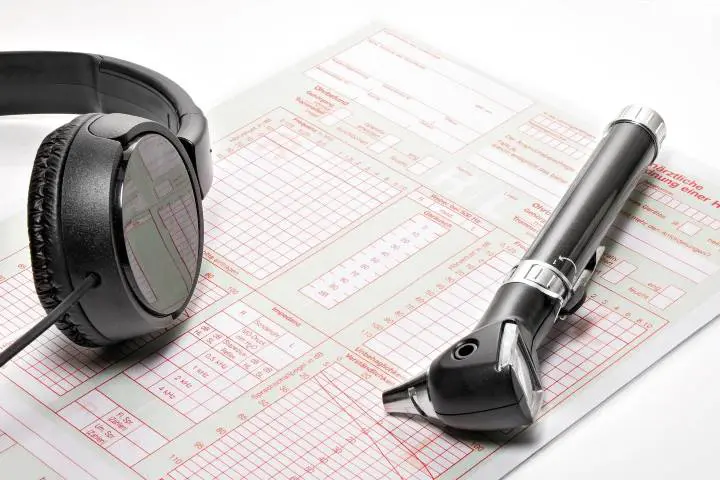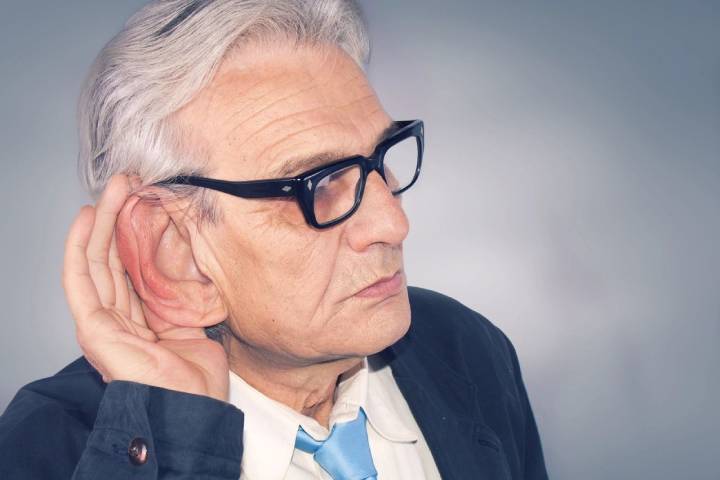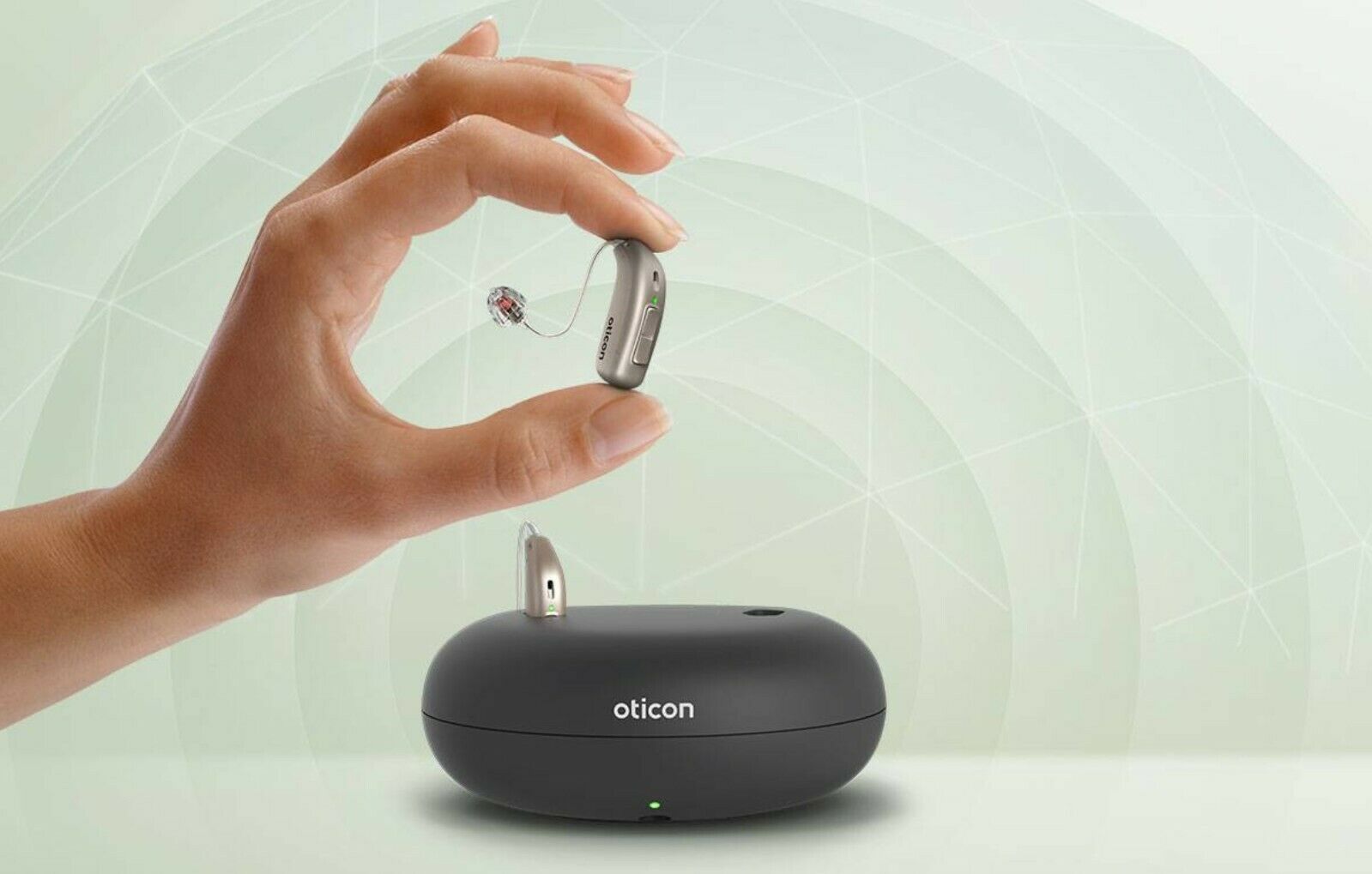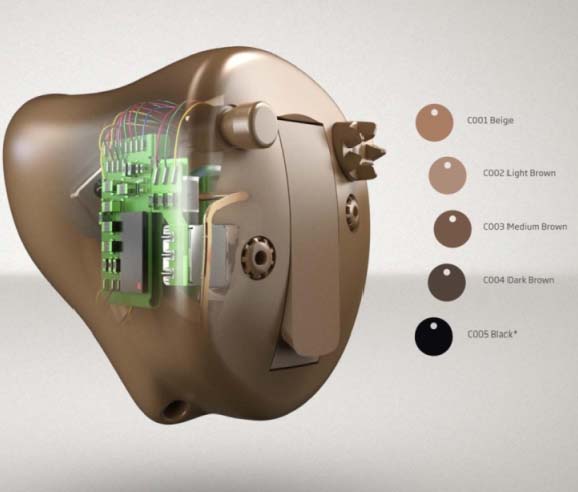
Providing You With an Amazing Listening Experience
The basic working principle of all hearing aids is the same. They pick up ambient noise, convert it to electrical impulses, and then send them to the ear in a modulated form. However, depending on the severity of the hearing loss and personal preferences, hearing aids can vary significantly.
These devices not only vary in terms of appearance and size but also in their characteristics and functions. Continue reading to learn more about HearWay Audiology hearing aids and book an appointment for hearing aid repair services.
Types of Hearing Aids
Hearing aids are available from several different hearing aid brands in a number of designs for every type of hearing impairment or hearing loss, as well as a variety of functions to meet your lifestyle demands.
This range of options ensures that the hearing aid can be tailored to your specific needs and preferences. Here is a brief overview of the different types of hearing aids and their features:
-
Behind-the-Ear – This type of hearing aid rests on the back of the outer ear and is traditionally the most powerful.
-
Receiver-in-Canal – Open-fit hearing aid that uses a thin plastic micro tube extending into the ear canal.
-
In-the-Ear – Small hearing aids that are worn entirely in the ear or ear canal rather than behind it.
-
Lyric – This is completely invisible and worn deep in the ear canal, making it completely discreet.
Comparing Digital and Analog Hearing Aids
Hearing aids can be classified as analog or digital based on how they process signals. Most hearing aids in today’s market are digital.
Analog Aids
Analog hearing aids pick up signals from the surroundings, which are then reproduced and amplified by a loudspeaker. However, the main drawback of analog aids lies in the fact that these devices lack sound filtration or noise reduction technologies.
Digital Aids
Sound is converted into electronic information by digital hearing aids. Unlike their analog counterparts, these devices amplify and transmit only the major signals, while lowering ambient noise levels.
This facilitates better hearing even in noisy surroundings. Digital aids are smaller than analog ones and can be customized to meet specific demands. In addition to better sound quality, digital hearing aids improve speech understanding. This enhances the overall user experience and makes hearing simpler.
Open and Closed Fitting Aids
Hearing aids can be categorized as open fitting and closed fitting depending on their design and how they transmit sound waves to the eardrum.
Open Fitting
Hearing aids with an open-fitting design allow sound waves to reach the eardrum naturally. Open fittings are used in behind-the-ear devices, where the sound tube and earpiece are located in the external ear canal. Natural hearing is feasible because audible noises are not amplified. Open-fit designs also allow for better ear canal airflow.
Closed Fitting
An earpiece or in-the-ear hearing aid effectively seals the external ear canal. This does not, however, imply that the ear is not well ventilated. The earpiece fits better in the ear and transmits sound waves more directly.
As a result, the whole spectrum of hearing aid features can be utilized to their full potential. Closed models are also more adaptable and can be used to treat a variety of hearing problems.
Behind-the-ear (BTE) Aids
Behind-the-Ear (BTE) aids are the most common type of hearing aid available on the market. Traditionally, the most powerful, BTE aids are housed in a hard and durable outer case that rests on the back of the outer ear.
These adaptable devices are appropriate for a wide spectrum of hearing loss conditions, including profound hearing loss, and are available in multiple sizes. While larger BTEs provide greater power and functions, the smallest ones are virtually undetectable when worn.
In behind-the-ear hearing aid designs, the sound is transferred into the ear via a very small tube that leads to a custom ear mold. BTE hearing aids are larger than compared to other hearing aid types, allowing them to accommodate more electronic components. As a result, they are able to store more functions and provide advanced performance for a wider range of hearing loss types. BTEs are also comfortable, easy to mold, and easy to help and maneuver for caregivers.


Structural Details
The primary components of all hearing aids are the same. The following are some of the features of behind-the-ear hearing aids:
-
Microphone – Picks up sound and turns it into electrical impulses.
-
Amplifier — Boosts the volume of microphone signals while filtering out unwanted noises.
-
Loudspeaker – Converts electrical signals into acoustic signals.
-
Speech Processor – Adjusts signals to the wearer's specific hearing requirements.
-
Volume Regulator – The wearer can control the volume with the volume regulator.
-
Ear Hook – The hearing aid and the sound tube are connected by an ear hook.
-
Audio Input – Signals from other external devices are picked up by the audio input.
-
Power supply battery (disposable or rechargeable) – While disposable batteries can be replaced multiple times, rechargeable batteries can be charged once and last for up to 24 hours.
A sound tube connects the hearing aid to the ear and terminates in a fastening piece, often known as an earpiece or ear shell (ear mold). The external receiver model (receiver-in-canal, or RIC), in which the loudspeaker lies within the ear and transmits sound directly to the eardrum, is a variation of the original BTE hearing aid.
Design Types
BTEs can be categorized as open-fit and closed-fit depending on the design and how sound waves are transmitted.
Closed-fit BTEs
In closed-fit BTEs, the outer ear is filled with a custom-fit ear mold. While closed-fit models are larger than their open-fit counterparts, they are easier to handle as they seal the auditory canal. This reduces the possibility of the user experiencing whistling and buzzing sounds that interfere with the hearing process.
Open-fit BTEs
Open-fit BTEs are characterized by the presence of a tiny plastic micro tube that extends over the outer ear and into the auditory canal. The open-fit tube prevents the "stopped up" feeling of in-the-ear hearing aids, in addition to being compact and having more cosmetic appeal.
External Receiver Model (Receiver-in-canal, or Ric)
The smallest behind-the-ear devices come with external receivers and have wireless capabilities, in most cases.
Micro BTE Models
These hearing aids are smaller than traditional BTE devices and function effectively for individuals suffering from mild to severe hearing loss. They come in a variety of colors, shapes, and styles and can be worn comfortably behind the ear.
Advantages
-
Can be easily handled, inserted, and adjusted
-
Suitable for all levels of hearing loss, ranging from mild to severe and profound
-
Accommodates multiple features
-
The presence of larger batteries guarantees a longer battery life
Disadvantages
-
More visible than smaller models
-
Greater sensitivity to wind
Hearing Loss – Lifestyle Comparison
BTE Hearing Aids are appropriate for people suffering from mild to severe hearing loss. The unobtrusive housing is designed to be worn behind the ear and is suited for individuals who engage in light to moderate physical activity. BTEs are the most powerful hearing aids available, since the components are located in an externally-worn compartment.


Receiver-in-canal (RIC) Aids
A small plastic “micro” tube runs from the hearing aid's body across the outer ear and into the ear canal, making RICs a type of open-fit hearing aid. A little, soft tip is inserted into the ear canal, but does not seal it. This allows air and sound to move freely into the ear canal, minimizing the sensation of being “closed up.”
RICs, also known as receiver-in-the-ear (RITE) or canal receiver technology (CRT), is simple to use and may accommodate a wide array of features. They can be worn comfortably behind the ear, much like normal BTEs. The loudspeaker or “receiver,” unlike normal BTE hearing aids, is located outside the housing, and attached to the end of a thin ear wire near the eardrum.
Greater Energy Efficiency
These types of hearing aids are generally smaller than BTEs and more energy efficient. The sound energy (and battery power) required to deliver a superior listening experience is comparatively lower, as the created sound only has a very short distance to travel with low transmission losses.
Advantages
-
No “plugged up” feeling
-
Allows sounds to escape the ear canal, thereby minimizing the disturbances caused by your own voice
-
Housed in casings that are small and practically unnoticeable
-
The tubing is nearly invisible, which enhances the cosmetic appeal
-
Larger batteries for longer battery life
Disadvantages
-
The receiver end is vulnerable to moisture
-
While RICs are less noticeable due to their less intrusive placement, users may be at a greater risk of losing them during traveling and other activities
Hearing Loss – Lifestyle Comparison
RIC hearing aids are an excellent fit for more than half of hearing aid patients. These hearing aids may be the right choice for you if your hearing loss is slight to moderately severe, and you can manipulate small objects.
RICs are among the most adaptable hearing aids available and ideal for those participating in only light to moderate physical activity. Add-on capabilities, such as wireless connectivity and streaming, have made significant progress in recent years.
In-the-ear (ITE) Aids
Unlike BTEs and RICs, in-the-ear (ITE) hearing aids include a broad variety of hearing aids that are worn completely inside the ear and not behind it. ITEs can be furthered subdivided into 3 categories, namely:
-
In-the-canal (ITC)
-
Completely-in-Canal (CIC)
-
Invisible-in-canal (IIC)
Hearing aids in the ear can also refer to the larger one-piece hearing devices shown below. The custom-fitted piece houses all the components and entirely fills the ear's bowl.

ITE Aids – General Overview
If you want a hearing device that is easy and convenient to use, in-the-ear (ITE) hearing aids are a wonderful choice. Traditional ITE hearing aids are available in a variety of sizes and are usually worn completely inside the ear/ear canal. Many technological components, such as a telecoil, multiple directional microphones, and other functions, can be housed in one single casing with these hearing aids.
All of the parts are contained within a tiny shell. By using the remote control, you can adjust the volume and select programs. Many types can be wirelessly connected to electronic devices, such as cell phones and television sets.
Advantages
-
Discreet and barely visible from the outside
-
Suitable for people who wear glasses
-
Ensures a greater degree of comfort during sports & physical activities
Disadvantages
-
Suitable only for patients suffering from mild to moderate hearing loss
-
Can create a“plugged up” feeling
-
Susceptible to moisture
In-the-canal Hearing Aids
Hearing devices that fit in the ear canal are referred to as in-the-canal (ITC) aids. They're somewhat larger and stick out a little more than completely-in-the-canal (CIC) hearing aids. In-the-canal (ITC) hearing aids, on the other hand, may accommodate more features than CICs due to their slightly bigger size.
ITC hearing aids, like CICs and ITEs, are custom-fit for your ear. They sit somewhat further out and are a bit more visible as compared to CIC hearing aids. Wearers can select from a range of flesh-toned casings, making them virtually undetectable.
If you're looking for a discreet hearing aid, try an ITE, which fits directly into the ear canal and includes a telecoil as well as Bluetooth®-enabled technology.

Completely-in-canal (Cic) Hearing Aids
CICs are ideal if you have a busy lifestyle or want a hearing aid that is nearly undetectable to others. These are one of the most discreet devices on the market since they are inserted straight into the ear canal.
However, CICs may not have as many advanced features as their larger counterparts due to their compact size. The microphone's intimate proximity to the eardrum results in a more natural listening experience free of feedback, whistling, or a “plugged up” sensation.
These one-piece hearing aids are custom designed to fit your ear canal perfectly. The microphone and battery door are on the aid's face, while a small speaker is mounted on the back.
Advantages
-
Very discreet
-
Custom-fit
-
Natural hearing experience
-
Low feedback due to placement
-
Stays in place
Disadvantages
-
Shortened average battery life due to small batteries
-
More difficult to insert into the ear than larger styles of hearing aids
-
May lead to moisture and earwax buildup
-
Accommodates fewer features than larger models
Invisible-in-canal (IIC) Hearing Aids
IICs are worn deep inside the ear canal. They are placed directly into the ear canal and withdrawn with a string. If you live a moderate to busy lifestyle and don't want your hearing aids to be visible to others, IICs could be an excellent alternative.
Conversely, these may not be the greatest solution for individuals with more severe or profound hearing loss, as IICs do not give the same amount of power as other, larger types.
Almost no one can see the IIC since it is worn so deep in the canal. It is advised that they be inserted and removed by a hearing care professional.
Advantages
-
Least noticeable hearing aid
-
Natural sound localization due to placement
-
Reduced occlusion
Disadvantages
-
Too small for directional microphones
-
More vulnerable to moisture
-
May require monthly visits for replacements
